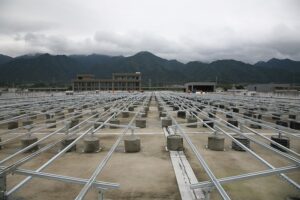
Clean Energy for All: Bridging the Gap in Global Access
In the modern era, the conversation surrounding clean energy has gained unprecedented momentum. With the looming threat of climate change and the dire consequences of fossil fuel dependency, the need for a sustainable energy future has never been clearer. However, this transition poses a significant challenge, particularly concerning global access to clean energy. Bridging the gap in clean energy accessibility is not only essential for environmental conservation but also crucial for fostering economic growth, improving public health, and promoting social equity worldwide. This article delves into the state of global clean energy access, explores the existing disparities, and presents potential solutions to ensure that clean energy becomes a reality for all.
Understanding Clean Energy and Its Importance
Clean energy refers to energy sources that produce little or no greenhouse gas emissions during their production and operation. It includes renewable sources such as solar, wind, hydroelectric, and geothermal energy, as well as other technologies that enhance energy efficiency and reduce pollution. The importance of clean energy extends beyond merely addressing climate change. It is vital for:
- Environmental Sustainability: The shift to clean energy drastically reduces emissions that contribute to global warming, helping to mitigate the adverse effects of climate change.
- Economic Development: Investment in clean energy technologies creates jobs, stimulates local economies, and encourages innovation.
- Public Health Improvement: Clean energy reduces air and water pollution, leading to better health outcomes for communities.
- Energy Independence: A diversified energy portfolio based on local renewable resources enhances a nation’s energy security and reduces dependency on imported fuels.
The State of Global Energy Access
Globally, over 770 million people lack access to electricity, and around 2.6 billion individuals rely on traditional biomass and kerosene for cooking and heating. This energy poverty hinders economic progress, perpetuates social inequalities, and poses significant public health risks. While the world has made strides toward addressing energy poverty, the rate of progress is uneven across regions and demographics.
The United Nations Sustainable Development Goal 7 aims to ensure access to affordable, reliable, sustainable, and modern energy for all by 2030. Achieving this goal is not only a matter of technological advancement but also involves recognizing and addressing systemic barriers that hinder access to clean energy.
Existing Disparities in Clean Energy Access
The disparities in clean energy access are stark when viewed through the lens of geography, income, and gender. Here are some key factors contributing to these disparities:
Geographical Disparities
Access to clean energy varies significantly between urban and rural areas. In many developing nations, rural regions are often left behind in the transition to clean energy. Limited infrastructure, lack of investment, and inadequate policy frameworks contribute to these geographic disparities. Urban centers, on the other hand, are better positioned to benefit from advancements in clean energy technology.
Economic Barriers
The initial costs of clean energy technologies can be prohibitive, especially for low-income households. The affordability of solar panels, wind turbines, and energy-efficient appliances can be a significant barrier to entry. Furthermore, low-income families often spend a larger proportion of their income on energy, making it challenging to afford cleaner alternatives.
Gender Inequality
Women, particularly in developing countries, often bear the brunt of energy poverty. They are typically responsible for collecting fuel and cooking for their families, a task that can expose them to health hazards from smoke inhalation. Access to clean energy not only improves health outcomes but also empowers women by providing them with time-saving technologies that can enhance their economic opportunities.
Strategies to Bridge the Clean Energy Gap
To bridge the gap in clean energy access, a multifaceted approach is necessary. Here are some strategies that can help create a more equitable energy future:
Policy Frameworks and Supportive Regulations
Governments must create and implement policies that promote clean energy access. This includes offering incentives for renewable energy investments, creating supportive regulations that encourage innovation, and establishing clear pathways for infrastructure development. Policies should also consider the unique challenges faced by marginalized communities and aim to include them in the energy transition.
Investment in Renewable Energy Technologies
Investment is crucial for scaling up clean energy solutions, particularly in developing regions. Public-private partnerships can play a pivotal role in mobilizing funds and resources. Innovative financing models, such as microfinancing and pay-as-you-go systems, can help make clean energy technologies more accessible to low-income households.
Community-Based Approaches
Empowering local communities to participate in their energy solutions can yield significant benefits. Community-driven energy projects can enhance collective ownership and promote sustainable practices. By involving local populations in decision-making processes, energy initiatives can be tailored to meet specific community needs, leading to better outcomes and greater acceptance of new technologies.
Education and Awareness Campaigns
Raising awareness about the benefits of clean energy is crucial for fostering wider adoption. Education initiatives should inform communities about available technologies, financial assistance programs, and the long-term advantages of transitioning to clean energy. By increasing knowledge and reducing misinformation, communities can make informed choices regarding energy use.
International Cooperation and Knowledge Sharing
Addressing global energy access issues requires collaboration between nations, organizations, and stakeholders. International partnerships can facilitate the sharing of best practices, technologies, and financial resources. Programs that allow for the exchange of knowledge can accelerate the transition to clean energy in developing regions, ensuring that lessons learned in one area can be replicated in others.
Examples of Successful Clean Energy Initiatives
There are numerous examples worldwide of successful clean energy initiatives that have significantly improved access to sustainable energy. These case studies illustrate that effective strategies can lead to meaningful change:
Solar Energy in Bangladesh
Bangladesh has made significant strides in providing access to electricity through solar home systems, particularly in rural areas. The country implemented a program that has installed over 4 million solar home systems, benefiting millions of people and reducing reliance on kerosene lamps. This initiative has improved access to clean energy while creating jobs in local communities.
The M-Kopa Model in Kenya
M-Kopa, a Kenyan company, has pioneered a pay-as-you-go solar energy model that enables low-income households to access solar power without the upfront costs. Customers make small daily payments, allowing them to gradually own the system. This approach has demonstrated the viability of innovative financing solutions in promoting clean energy accessibility.
Community Wind Projects in India
Community-led wind energy projects in India empower local communities while reducing their reliance on fossil fuels. These projects not only provide clean energy but also create jobs and promote sustainable development. By involving local populations in project planning and implementation, these initiatives have fostered a sense of ownership and responsibility towards clean energy.
The Road Ahead: Challenges and Opportunities
While the path to bridging the clean energy gap is fraught with challenges, it is also rich with opportunities. The global commitment to a sustainable future is growing, with many countries prioritizing renewable energy development and climate action. However, sustained effort is needed to ensure that clean energy is accessible to all, particularly the most vulnerable populations.
Governments, organizations, and the private sector must continue to collaborate and innovate to overcome the barriers to clean energy access. By prioritizing inclusive approaches and investing in education and community-led initiatives, the global community can create an equitable energy future that benefits everyone.
Conclusion
Bridging the gap in global clean energy access is not just a technical challenge but a moral imperative. By ensuring that clean energy is available to all, we can foster sustainable development, improve public health, and combat climate change. The transition to a clean energy future must prioritize equity, inclusion, and collaboration. As we move forward, it is essential to harness the power of innovation, community engagement, and international cooperation to make clean energy a universal reality. The journey toward a sustainable energy future has begun, and it is a journey that must include everyone.



